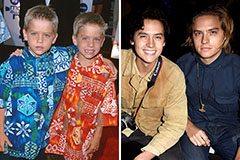Discover Advanced Assistive Instruments for Individuals With Visual Problems
The landscape of assistive technology for people with visual impairments is developing swiftly, presenting an array of cutting-edge tools that improve autonomy and engagement. From clever glasses that effortlessly merge aesthetic input with acoustic guidance to advanced navigating applications that redefine spatial awareness, these tools are reshaping possibilities.
Smart Glasses Innovations
Smart glasses represent a significant development in assistive technology for individuals with visual impairments. Furnished with cams and sensing units, smart glasses can catch real-time aesthetic details, which is after that processed and conveyed to the customer via sound comments or haptic sensations.
Moreover, advancements in expert system have actually further enhanced the abilities of clever glasses. Device knowing formulas can recognize faces, read text, and identify items, making them very useful tools for day-to-day tasks. Users can get auditory hints that supply context concerning their environment, promoting freedom and confidence.
Furthermore, the ergonomic style and lightweight nature of numerous wise glasses make them appropriate for extended usage, making sure comfort while enhancing capability. As these gadgets continue to evolve, they hold the potential to change the means individuals with aesthetic disabilities experience their lives, linking the gap between access and innovation. The ongoing study and growth in this area pledge to broaden the opportunities for wise glasses, making them a crucial part of modern assistive devices.
Navigation Application and Equipment
Numerous navigation apps and devices have emerged as vital sources for individuals with aesthetic disabilities, significantly improving their capability to pass through unknown environments. These innovations utilize GPS capability, audio hints, and real-time data to give customers with precise navigating support.
One noticeable instance is the Aira application, which connects users to experienced agents that can offer aesthetic summaries of surroundings and navigation guidance via an online video clip feed. This solution boosts the customer's spatial awareness and self-confidence while browsing. Another remarkable tool is Seeing Eye GPS, which offers voice-guided navigating and points of passion, allowing users to gain access to vital details regarding their surroundings.

As innovation remains to development, the advancement of a lot more sophisticated navigation tools guarantees to further empower individuals with visual impairments, promoting smooth wheelchair and combination right into varied atmospheres. Such advancements are important in promoting a more inclusive society.
Braille Modern Technology Advancements
In recent times, advancements in Braille technology have actually dramatically transformed how people with visual disabilities gain access to information and engage with the world around them. The advancement of portable Braille screens has actually changed analysis by allowing users to connect wirelessly to tablets, mobile phones, and computers. These gadgets convert text into Braille in real-time, making it possible for smooth communication with electronic content.
Furthermore, ingenious Braille printers have arised, improving the production of responsive products. Modern embossers are faster and more reliable, enabling the quick development of Braille records and instructional materials. This performance decreases the time and cost associated with generating Braille sources, making them a lot more accessible to companies and institutions.
Additionally, the assimilation of Braille with other modern technologies, such as expert system and device discovering, has opened new opportunities for customized understanding experiences. Voice acknowledgment and synthesis innovations can complement Braille, offering an inclusive technique to details circulation.
As the need for comprehensive education and workplace environments grows, these technical developments play a vital function in empowering people with aesthetic impairments, ensuring they have equal access to details and opportunities in what is optometry school various facets of life.
Wearable Instruments for Independence
A growing variety of wearable tools is boosting freedom for people with visual problems, supplying cutting-edge solutions that enhance navigating and daily living. Braille displays and notetakers. These devices utilize sophisticated innovations to view it give real-time responses and support, promoting autonomy in numerous environments

Wearable technology also consists of smartwatches that can be set with availability functions, enabling users to receive notices, track their places, or even call for support with the touch of a button. In addition, some tools incorporate expert system to examine the setting, offering sound descriptions of neighboring items or individuals.
Voice-Activated Assistive Solutions
Leveraging you can look here voice-activated assistive options has actually changed the landscape of assistance for individuals with aesthetic problems, supplying hands-free interaction and accessibility to a variety of jobs. These innovations use all-natural language handling and man-made intelligence to allow customers to carry out day-to-day activities via straightforward voice commands.

Additionally, recent advancements in voice acknowledgment accuracy have actually boosted the customer experience considerably, suiting varied accents and speech patterns. This inclusivity makes sure that even more individuals can benefit from these modern technologies, cultivating a greater sense of freedom.
Final Thought
To conclude, the growth of advanced assistive devices dramatically enhances the independence and lifestyle for individuals with aesthetic problems. Innovations such as wise glasses, navigation applications, Braille modern technology, wearable devices, and voice-activated remedies collectively promote a more inclusive environment. These innovations encourage customers to navigate their surroundings with confidence and engage even more totally with the globe, ultimately promoting greater availability and equal possibilities for individuals dealing with visual challenges.
The landscape of assistive innovation for people with aesthetic impairments is progressing swiftly, providing a range of ingenious devices that improve autonomy and engagement.Smart glasses stand for a considerable advancement in assistive modern technology for people with visual impairments. As these gadgets proceed to develop, they hold the potential to change the means people with aesthetic problems experience their everyday lives, linking the gap in between accessibility and technology.In current years, improvements in Braille innovation have considerably transformed how people with aesthetic disabilities accessibility information and engage with the globe around them. These technologies equip customers to browse their environments with self-confidence and involve more fully with the globe, inevitably promoting better access and equal opportunities for individuals dealing with aesthetic difficulties.
 Dylan and Cole Sprouse Then & Now!
Dylan and Cole Sprouse Then & Now! Alisan Porter Then & Now!
Alisan Porter Then & Now! Burke Ramsey Then & Now!
Burke Ramsey Then & Now! Traci Lords Then & Now!
Traci Lords Then & Now! Andrew McCarthy Then & Now!
Andrew McCarthy Then & Now!